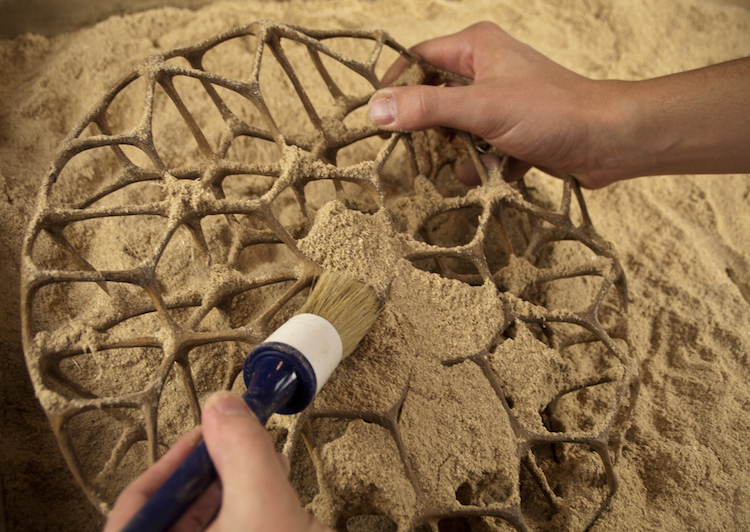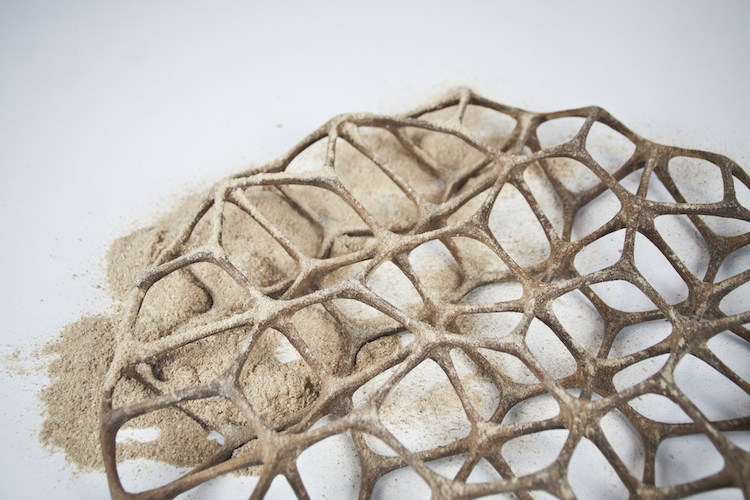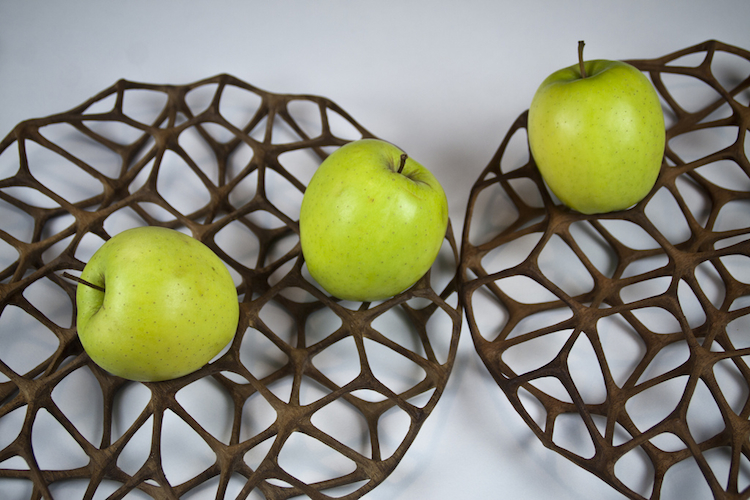The rapid-prototyping juggernaut Freedom of Creation is out with what it calls "the most ecological way to create products": sawdust.
Used to be, if you wanted to make a detailed shape out of wood -- for a nice little fruit bowl, say -- you had to carve it by hand using a big chunk of timber, which is a.) time-consuming b.) expensive and c.) bad for the environment. (Think of all the scraps you end up with.) Now, you can just pull it out of a printer. 

Still it's a promising development in the field of 3-D printing, which bills itself as a paragon of sustainability but, as industry insiders tell it, hasn't always lived up to the hype. FOC seems particularly excited about the formal and aesthetic possibilities "Tree-D" printing affords designers. “There is no wood carver on earth who could possibly make such complex things and especially with this kind of fine detail,” Garrett says. Well, that might be a slight exaggeration.
http://www.fastcodesign.com/1663532/3-d-print-insanely-complex-and-eco-friendly-designs-out-of-wood
Here you can see a comparison between a gray Laser Sintered Macedonia tray to a teak tray. The accuracy, which we have been able to create is quite astonishing with a very modest budget.

The strength of the objects is very similar to MDF, but naturally the complexity of the geometries we are able to produce is on a totally different level than compared to simple pressed wood. The process still takes about twice as much time compared to Selective Laser Sintering.
The digital 3D computer file we use to manufacture the Macedonia Fruit Tray.

The 3D printing process of the Macedonia tray in wood, picture shows the base material, sawdust and a finished layer of the Macedonia tray.

Cleaning process of sawdust of the tray after production.


We are currently looking at partnerships to further develop and commercialize our Tree-D printing technology. Later this year we plan to launch our first interior products using this technology. If you are interested in partnering with Freedom Of Creation please contact: michiel@freedomofcreation.com


Δεν υπάρχουν σχόλια:
Δημοσίευση σχολίου